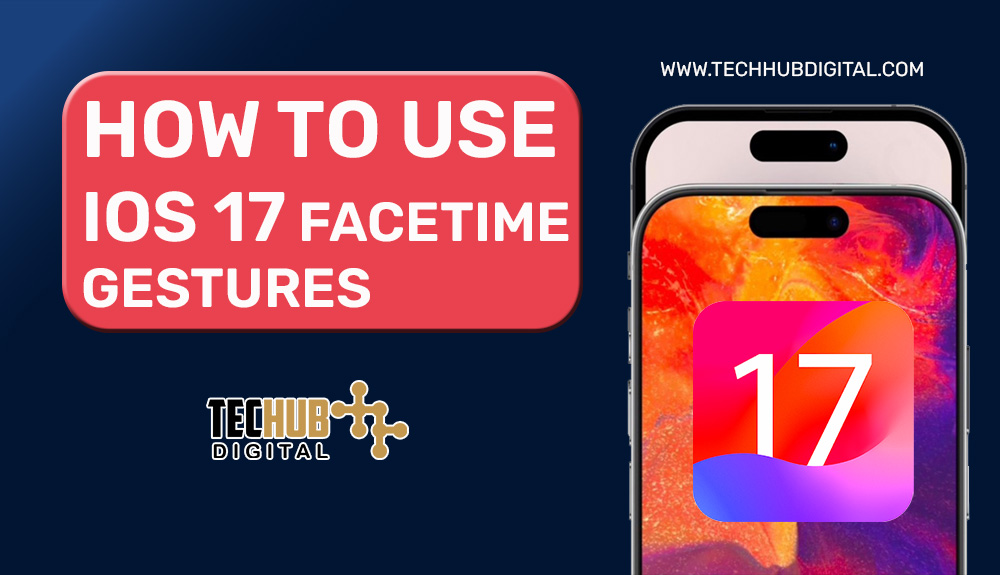
iOS 17 FaceTime Gestures: Enhance Your Video Calls with These Cool Gestures
In the field of digital communication Apple made an amazing breakthrough with iOS 17 that highlights FaceTime to a totally new level. This feature moves to send animated reactions during video calls, by utilizing simple physical gestures. Moreover, this addition not only makes the participants’ interpersonal communication more interesting but brings pleasantness to conversations. Below is a detailed article on how to utilize gestures with FaceTime in iOS 17, so you will make the most out of this new function.
Getting Started
Before we start using FaceTime gestures, you need to ensure that your device is up to the task. Besides, your device should be perfectly configured. iOS 17 FaceTime gestures require an iPhone 12 or later model, except the iPhone SE, with operating system iOS 17. The demand for these capabilities has led to a fundamental requirement for the A14 chip as well as the TrueDepth camera that carries out the processing and execution of these smart 3D animations.
Enabling FaceTime Gestures
To activate FaceTime gestures, follow these steps:
- Initiate a Video Call: Make sure that you are using an app that allows video calls, be it FaceTime or other popular video conferencing apps like Microsoft Teams, Google Meet, or Zoom.
- Access Control Center: To access the Control Center, swipe your finger from the top right corner of your screen.
- Activate Video Effects: Find the “Video Effects” button right above the standard layout controls. Press on it to move on.
- Enable Reactions: Be sure that the “Reactions” button on your preview camera is switched on. It is the most important thing for the device to detect and perform your gestures successfully.
- Return to Your Call: You may use the swipe-up gesture to remove the control center and use Facetime gestures in your video call.
Discovering FaceTime Gestures
By activating the FaceTime gestures, now you can go through the different animations available. These call signs are very easy to use and allow one to convey additional feelings.
- Thumbs-Up: A thumbs-up icon, placed next to your face, automatically triggers the animation of thumbs-ups which is great for expressing agreement or approval.
- Thumbs-Down: Likewise, a thumbs-down animation conveys dissent or disapproval by reflecting the disapproving facial expression.
- Hearts: Spread love and affection by arranging your fingers in the shape of a heart, which will generate many red hearts up above to express your desire.
- Fireworks: When you both put thumbs up together they synchronize for a bright finale of fireworks.
- Rain: In order to show dissatisfaction or disapproval, the two thumbs hit the screen dramatically in the form of a downpour.
- Balloons: A peace sign with your fingers will trigger the appearance of colorful balloons floating around you, thus adding to the cheery mood of the conversation.
- Confetti: Performing the same peace sign gesture with both hands will shower your screen with confetti and this is well appropriate for occasions.
- Laser Burst: The “hair-raising” gesture, with the index finger and little finger raised, will release a dazzling laser beam, thus giving your call that rock-and-roll feel.
Tips for Successful Gesture Recognition
To ensure your gestures are recognized accurately, follow these tips:
- Positioning: Keep your hand a good distance (about 6 inches) from your face, to make sure you’re not hiding your face too much.
- Pause Briefly: After doing the gesture, keep it there for a moment or two and wait for the device to read it.
- Clear Background: Be sure that the background you use is not too packed with elements as these could mess up the measurements used for the animation.
- Lighting: Sophisticated lighting makes your movements better tracked by the camera.
Beyond FaceTime: Universal Compatibility
As one of the features of FaceTime gestures have the ability to work across different platforms. It works whether you use an iPhone iPad or iPhone using an Apple silicon Mac, and these gestures will be recognized in supported video conference apps. This inclusiveness that will be visible to all call participants regardless of what device they use will be the key factor for the creation of a new turning point in communication that will make it more inclusive and interesting.
The addition of FaceTime gestures in iOS 17 marks a noteworthy improvement in making digital communication more joyful and engaging. By following the simple steps which are outlined in the guideline, users can easily realize these animated responses in their video calls and hence they add a level of expressiveness and naturalness to their conversations. In the recent developments of technology, Facetime gestures in particular show the possibility of digital systems becoming more comprehensive and involving engaging ways of communicating with others, integrating virtual and face-to-face interactions.
Editors Recommendations
- How to Set Up WhatsApp Auto-Reply for Your Business
- How to Enable and Use Developer Options on Android
- How to Connect Your AirPods to Xbox Series X
- 7 Best Apple Studio Display Alternatives

Pooja Yadav is a Technical Content Specialist with over 6 years of experience. She mostly writes about the tech guides for Tech Hub Digital. She also has an interest in Smartphones, Bluetooth Earbuds/speakers, Wearables and all things gaming.
In her spare time, she watches movies, series and enjoys spending time outdoors.

